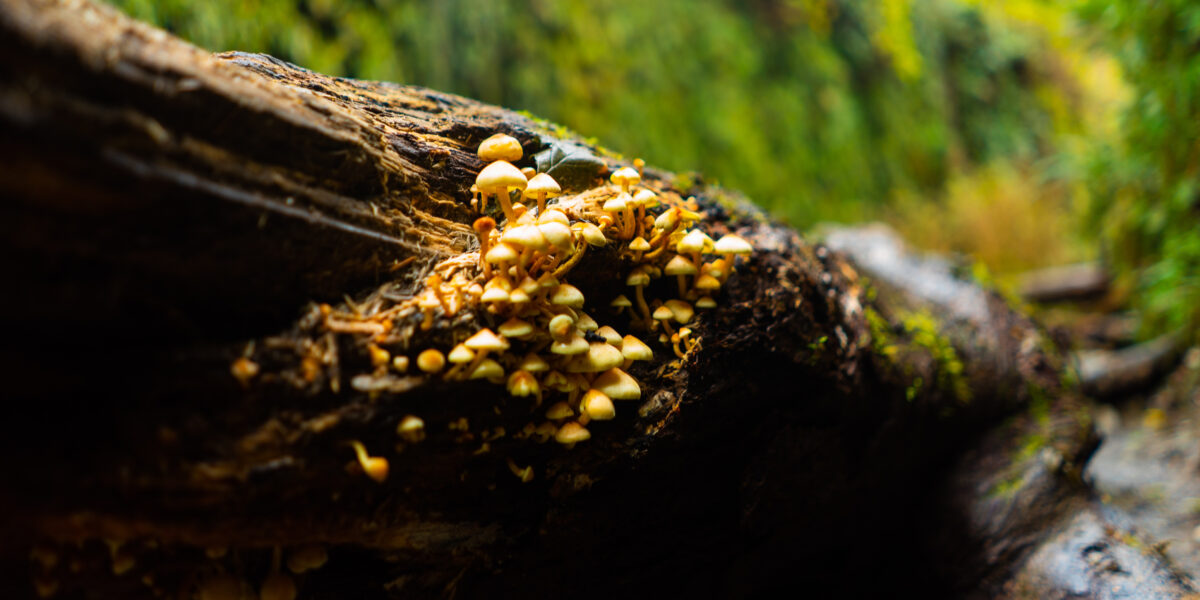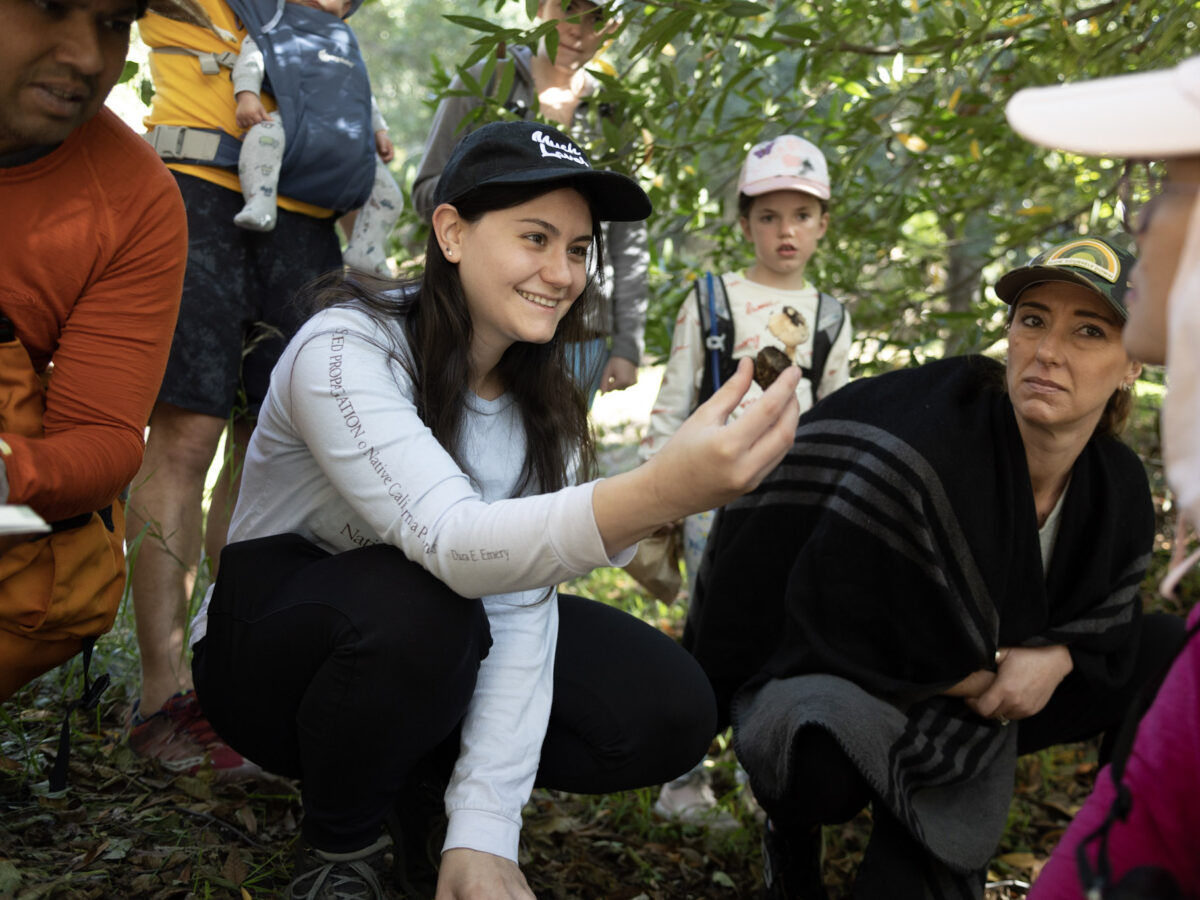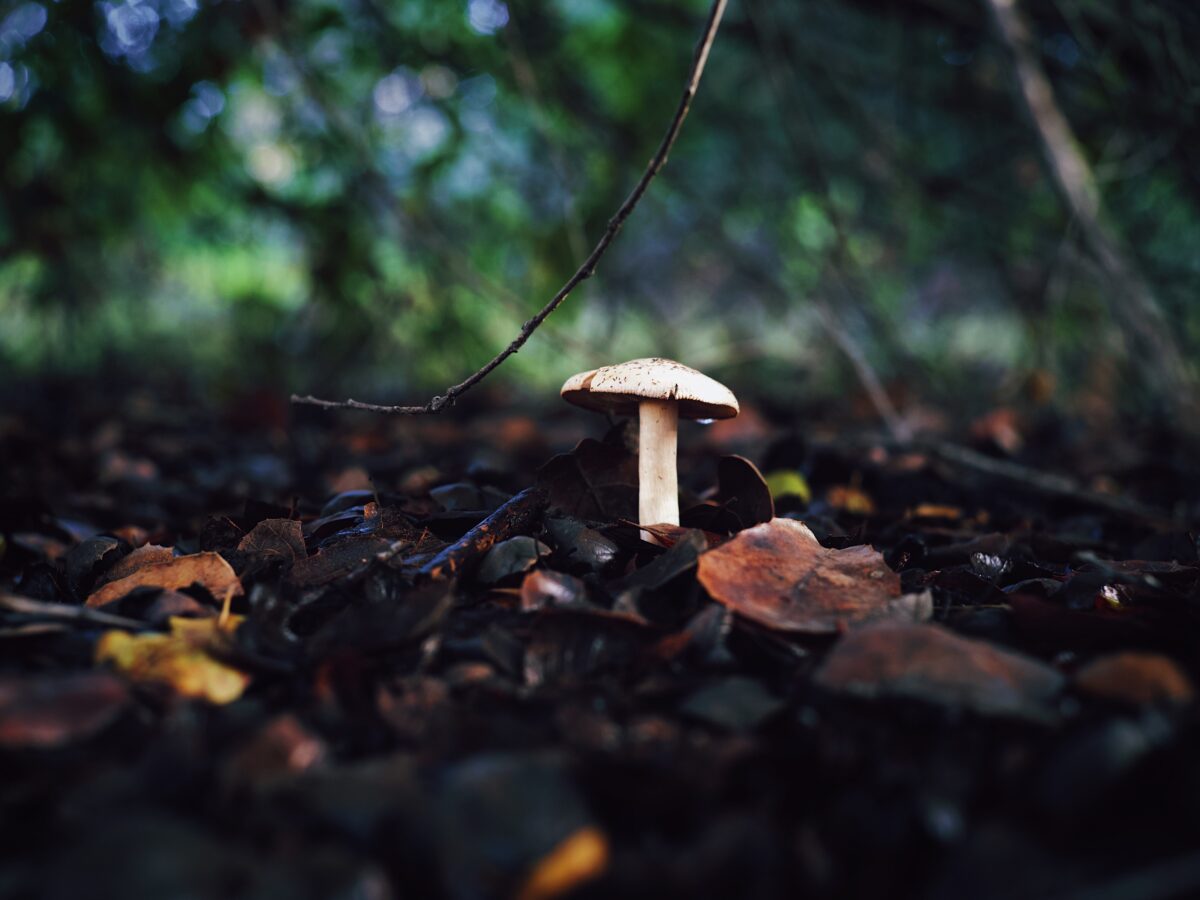
Move Over Super Bloom, There’s a Super Shroom Happening Right Now
Thanks to all this rain, mushrooms are popping up in record numbers. Here’s how to experience the mushroom explosion.

Everyone is excited about the wildflower super bloom, but due to the ongoing atmospheric rivers that keep hitting the West Coast, there’s also a mushroom super boom that, quite frankly, has professional mycologists and mushroom fans pretty much freaking out. “It’s just wonderful!” says Bat Vardeh, who leads mushroom hunting hikes via the Foraging and Mushroom Hunting Women of SoCal. Meanwhile Justen Whittall, a professor in the biology department of Santa Clara University, says this isn’t just a super shroom, “It’s a super-duper-shroom.”
Let’s look at the numbers, shall we? According to Whittall, Los Angeles County has recorded 14,243 observations of 653 species of fungi (this includes lichens), which is three times more observations than last year. Counts in Orange County, meanwhile, are three times higher than usual, and San Diego County is nearly two times higher. Meanwhile, Trent Blizzard, the president of the Northern Mycological Association and owner of the website Modernforager.com, says he’s hoping for a great season for porcini and morel mushrooms in the Pacific Northwest, which usually begins in May and goes through June. “The natural morels start in April in Southern Oregon, and there have been sightings already in lower elevations,” he says. “
To understand precisely why mushrooms are spreading almost as fast as the fungi in The Last of Us, knowing a bit about mushroom anatomy helps—and it’s fascinating, too. The majority of the mushroom body, called the mycelium, is found underground, while the mushrooms we see above ground are called the “fruiting body.” According to Vardeh, just as a tree produces seasonal fruit when conditions are right, mushrooms produce fruiting bodies when they have enough rain, then mature to create spores for mushroom reproduction.
“Mushrooms need a lot of moisture to fruit, but when conditions are ideal, like right now, Oh boy, can they fruit!” she says. Whittall agrees: “The more soaked the forest floor gets the more mushrooms I see.”

Cameron Coe
Which isn’t to say the forest is the only place to find mushrooms. Whittall and Vardeh both like to look for them pretty much everywhere. “They’re like wildflowers,” Whittall says. “If you know what to look for you’ll find them most places seasonally.” He finds them in the grocery store parking lot, the playground—any place where it’s damp, there’s a bit of soil, and some plant material is decomposing.
Similarly, Vardeh loves to look for them near sprinklers, under woodpiles, and in backyards and public parks. “The trick is to go slow, crouch down, and look closely,” she says. “Then you’ll see them.”
Of course, for those who want to go mushroom hunting, there are two main things to consider: One, how can you forage without poisoning yourself? And two, how can you do it without hurting the environment?
Vardeh recommends going on one of her hunting hikes, or joining the Los Angeles Mycological Society, which organizes events and forays. (You can use Google to find similar organizations all across the West.) “As far as poisonings go, we say ‘when in doubt, throw it out,’ and never eat anything you’re not absolutely sure about,” she says. “Poisonings arise when folks become a little bit more confident in their IDs, when they probably should still be extremely cautious. I always recommend second opinions from an expert.”
Certain mushrooms can be easier to identify and have no toxic lookalikes, but you still want to double-check. “At the end of the day, you are the only one responsible for what you consume,” Vardeh says.
(If, heaven forbid, you do suspect poisoning, the North American Mycological Association has a list of symptoms and steps one should take here.)

Sachin Uplaonkar/500px/Getty Images
If you’re not planning to eat mushrooms and know what poison oak and stinging nettles look like then you’re probably okay without a guide, Vardeh says, although you may not find as many mushrooms without help. In terms of the environment, you can’t really hurt mushrooms by picking them—“they’ll still release spores,” she allows—but the best thing to do in terms of the environment and your own safety is to stay on the trail.
For those who don’t particularly want to get on their hands and knees in their backyard or venture out into the hills, there are still ways to enjoy wild mushrooms. They’re often sold in farmers markets, and the website and app iNaturalist has a mind-blowing collection of information on pretty much any kind of plant, insect, mushroom, or bird that pops up in your neighborhood.
The website Mushrooms of the Redwood Coast is also chock full of information for beginners and experienced mushroom hunters. And then there’s Instagram. Vardeh particularly likes @jess.starwood for culinary inspiration and @sir.myxo.lot for “stunning photos of tiny things.”
Read the Current Issue Here!
Get one year of Sunset—and all kinds of bonuses—for just $29.95. Subscribe now!
